Each year in January, People’s History Museum (PHM) changes all 25 banners in the galleries. This annual event enables the public to see as much of the vast collection as possible and helps to preserve these treasures from light degradation.
Following this exciting change, our galleries will re-open with the 2025 Banner Exhibition on Saturday 18 January.
So today we’re joining National Lottery Heritage Fund for Heritage Treasures Day and showcasing treasures across three centuries in PHM’s collection.
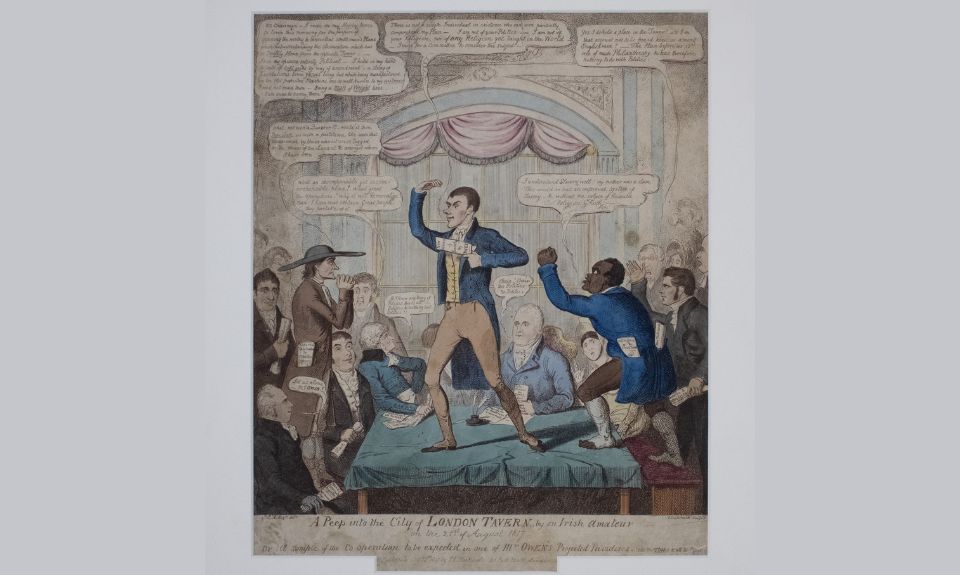
For our first treasure we turn to a satirical print, A Peep into the City of London Tavern by an Irish Amateur on the 21st August 1817, which shows Robert Owen, one of the founders of the co-operative movement and radical leader and author Robert Wedderburn engaged in debate.
In the 19th century people would congregate in large numbers to hear speakers on hustings, in halls, taverns and private clubs. Owen toured the country speaking at public meetings where he would share his ideas and campaign for better living conditions for working people. Wedderburn often used the Chapel, where he was a preacher, as a venue to spread his message.
Both men campaigned for reform of the political system in Britain. Wedderburn also fought for the abolition of slavery and was imprisoned having been accused of inciting revolution with his speeches.
Where can you see this item or find out more?
Not currently on display. Visit Gallery One to learn more about the evolution of oracy and secret societies.
Speeches have the power to inspire, motivate, and unite people, and to give hope. At PHM oracy is one of the focal areas of our new Learning Programme. We’ve a new bookable workshop which supports the teaching of oracy, drawing on PHM’s collection together with examples from popular culture. This workshop was made possible with Art Fund support.
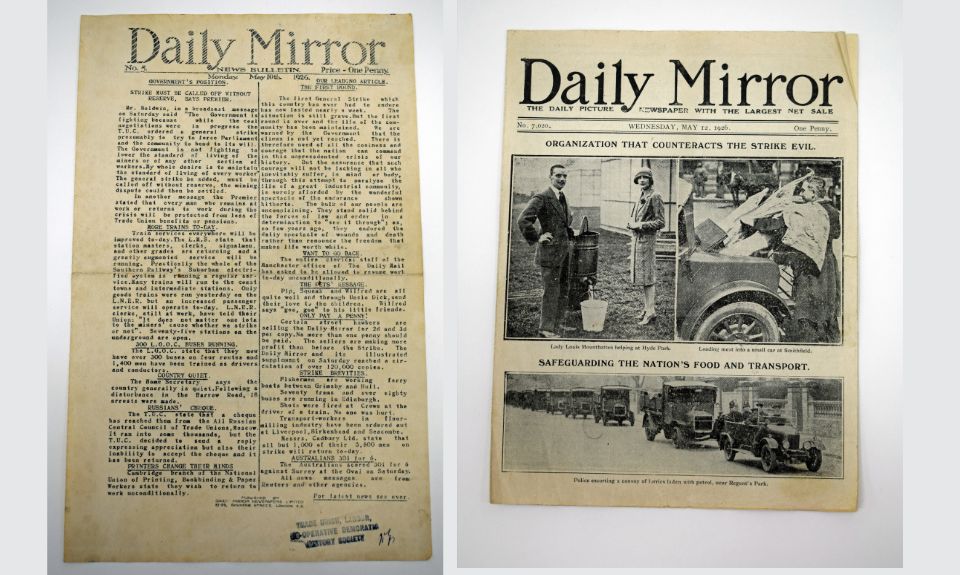
For nine days in May 1926 the nation’s industry was at a standstill. The General Strike was called by the Trades Union Congress (TUC) in support of the nation’s coal miners, who were in a bitter dispute with the mine owners.
The strike was sparked off by the Daily Mail printers who refused to print an article attacking the unions. This disagreement caused the initial negotiations between the TUC and British government to be called off.
With printers on strike, newspapers could only produce scaled-down issues during the strike. These two issues in PHM’s collection, Daily Mirror 10 May and 12 May 1926, were printed just two days apart.
Many of the newspapers stopped printing, so there were few means of communication between the authorities and the public. Some newspapers, like the Guardian, asked the TUC to make an exception for them, but the TUC refused. The main news at the time was received from the Government’s official newspaper The Gazette and the TUC’s official paper The British Worker. Both publications are held by the archive at PHM.
Where can you see these items or find out more?
Newspapers are on display in Gallery One. Contact archive@phm.org.uk to arrange an appointment to see more of PHM’s 1926 General Strike archive.
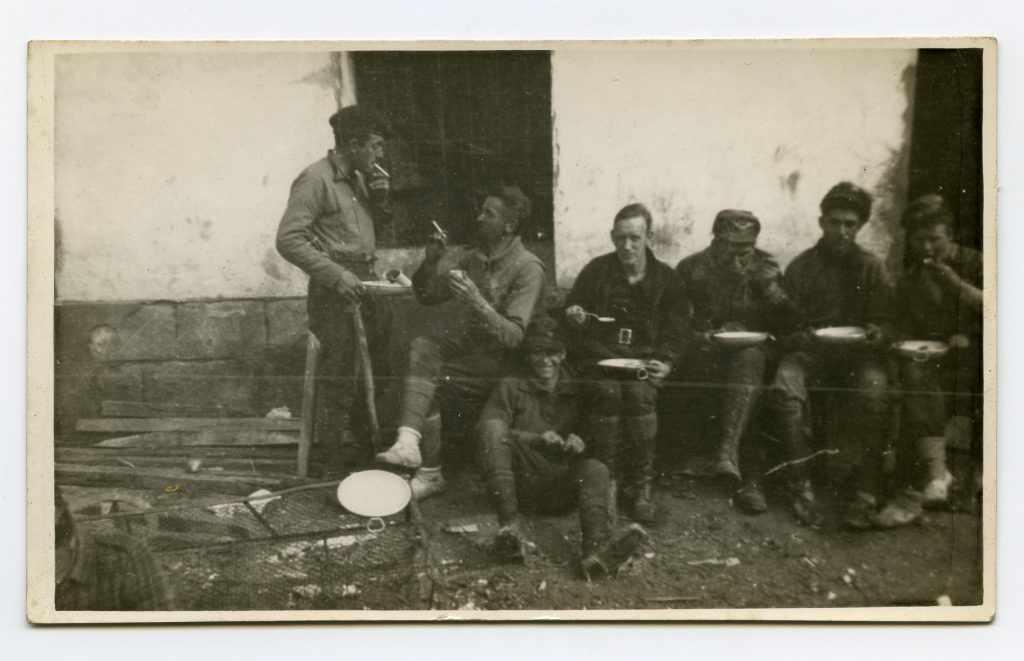
Our next treasure highlights the anniversary this month of George Orwell (died 21 January 1950) with a Spanish Civil War photograph in the Bob Edwards collection.
The George Orwell, Bob Edwards and comrades photograph, assumed to have been taken on Orwell’s personal camera, is not posed and has no military connotations. Instead, it shows the men taking time for themselves – relaxing, eating and chatting. It is these candid moments, such as with any conflict, that humanise those involved.
Although Orwell and other notable literary figures such as W H Auden, John Cornford, Stephen Spender and Christopher Caudwell, volunteered, most of the men who went to Spain were working class, including many unemployed miners. The majority of those who were moved to join and fight the war were not motivated by a privileged desire for rebellion, although several of the more notable names undoubtedly were. They were moved by the desire for genuine protest against the threat of fascism, a reality which would crush the working class.
Where can you see this item or find out more?
Photograph is not currently on public display. Contact archive@phm.org.uk to arrange an appointment.
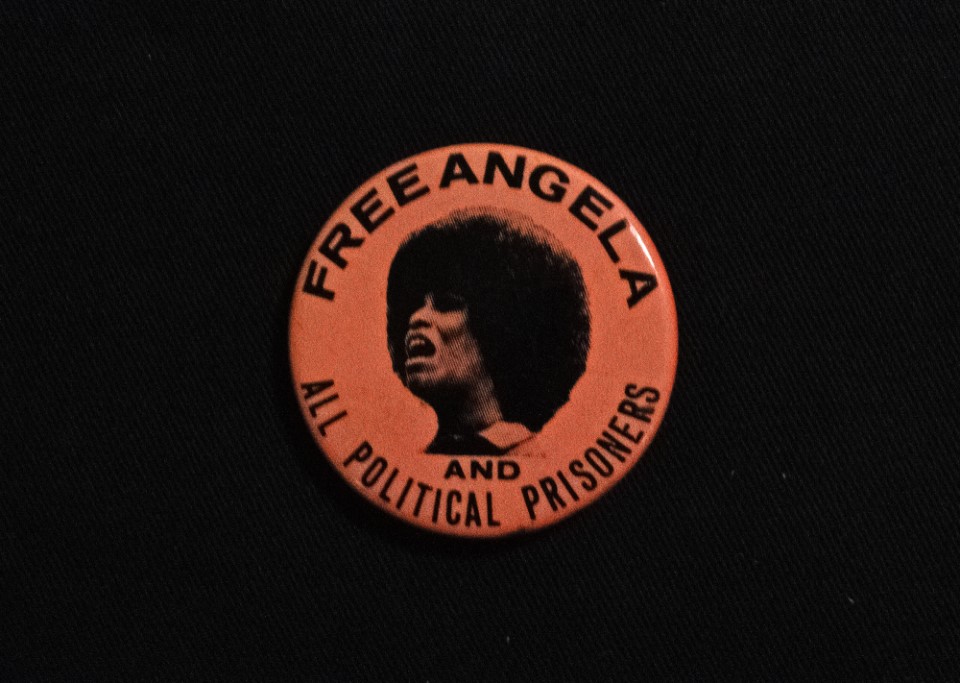
We highlight another January anniversary, this time the birthday of American activist, philosopher, feminist, and scholar Angela Davis (born 26 January 1944). The Free Angela Davis badge was created around 1970 in solidarity with Davis during her unjust imprisonment.
Guns that Davis had purchased legally were used in an attempted courthouse escape, which resulted in four deaths. Davis was arrested and incarcerated; charged with kidnapping and murder.
National and global campaigns and protests were organised to free her from prison. This led to the Free Angela Davis campaign and an international Angela Davis Defence committee across America and 67 other countries. She was released after 16 months on a not guilty verdict, as her ownership of the guns used did not justify accusing her of the crimes committed.
Davis went on to pursue anti-racist, socialist, communist and feminist activism. She has written several books on the prison industrial complex, Black feminism, and politics.
Where can you see this item or find out more?
Not currently on public display. Previously on display in the Collection Spotlight case (29 September 2022 to 30 March 2023) highlighting protest movements, revolutionary figures and organisations from Black history.
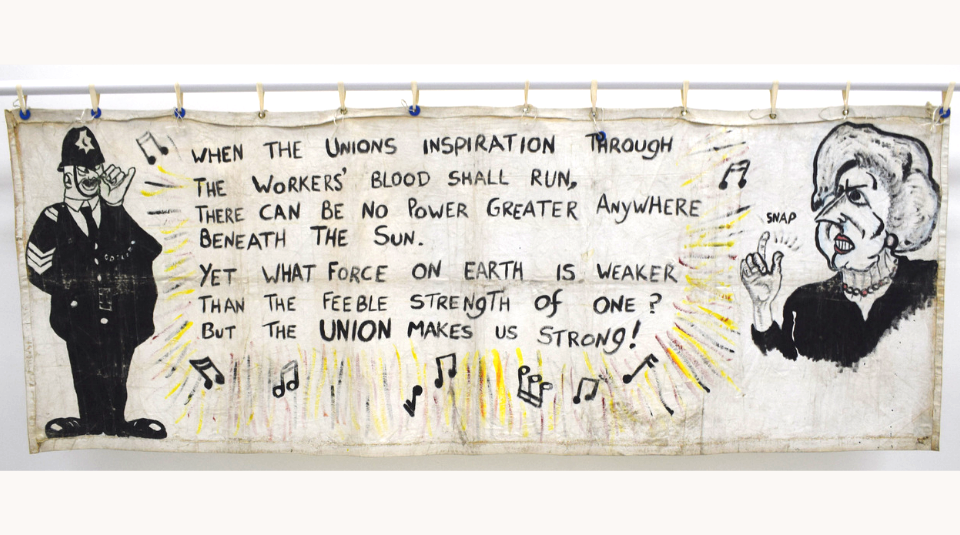
The Lesbians and Gays Support the Miners (LGSM) banner is one of PHM’s most recognisable treasures. Known to the world through the 2014 film, Pride (in which a replica of the banner appears), LGSM was a solidarity campaign between left wing LGBTQ+ activists and the mining community in Dulais, South Wales during the 1984 to 1985 Miners’ Strike. The banner was designed by Mark Ashton, and the reverse features hand drawn cartoons by Ashton of Margaret Thatcher and a police officer surrounding the first verse of the song ‘Solidarity Forever’.
LGSM shows the importance of cross community solidarity – people were surprised the LGBTQ+ community would care about miners, as mining communities were perceived as universally homophobic. But LGSM members thought that the vilification the government and the press were aiming at the striking miners had the same intention as the vilification of LGBTQ+ people – to divide and conquer. LGSM’s acts of solidarity, raising £22,500 for the striking families in Dulais, and visiting the community to build bonds of friendship, encouraged mining communities to show solidarity with LGBTQ+ people in return. Hundreds of miners marched with their own union banners behind the LGSM banner leading Gay Pride in London in 1985, and the National Union of Mineworkers to advocate for LGBT+ rights in the Labour Party.
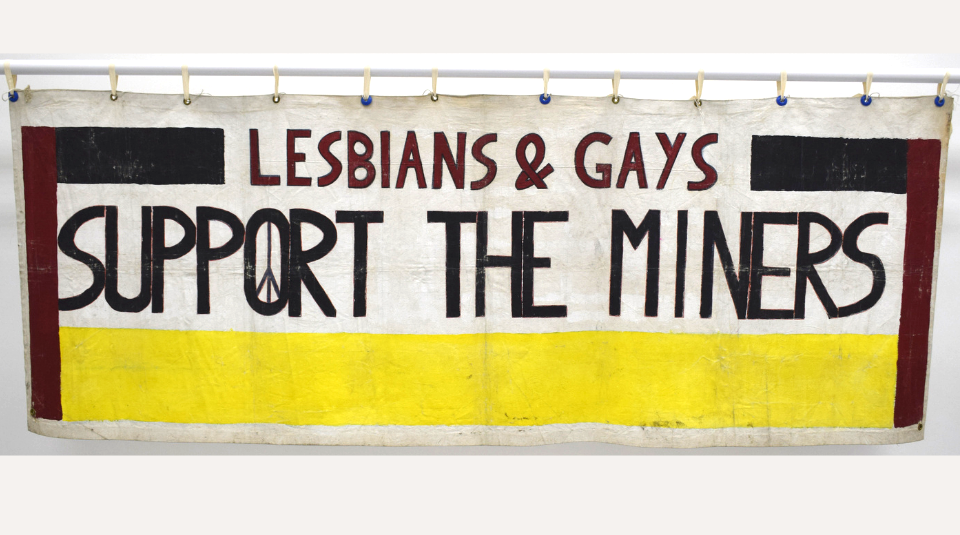
Where can you see this item or find out more?
LGSM donated their banner to the museum in the 1990s alongside their archive and a special photograph exhibition they designed. The banner will be on display throughout 2025 in Gallery Two as part of the 2025 Banner Exhibition (Saturday 18 January 2025 to Monday 29 December 2025). For the first time, it will be installed in a way which allows both the front and back to be seen.
Book your tickets to a very special late at PHM to mark 40 years since the 1984 to 1985 Miners’ Strike on 27 February 2025 including interviews with LGSM activists Mike Jackson and Jonathan Blake.
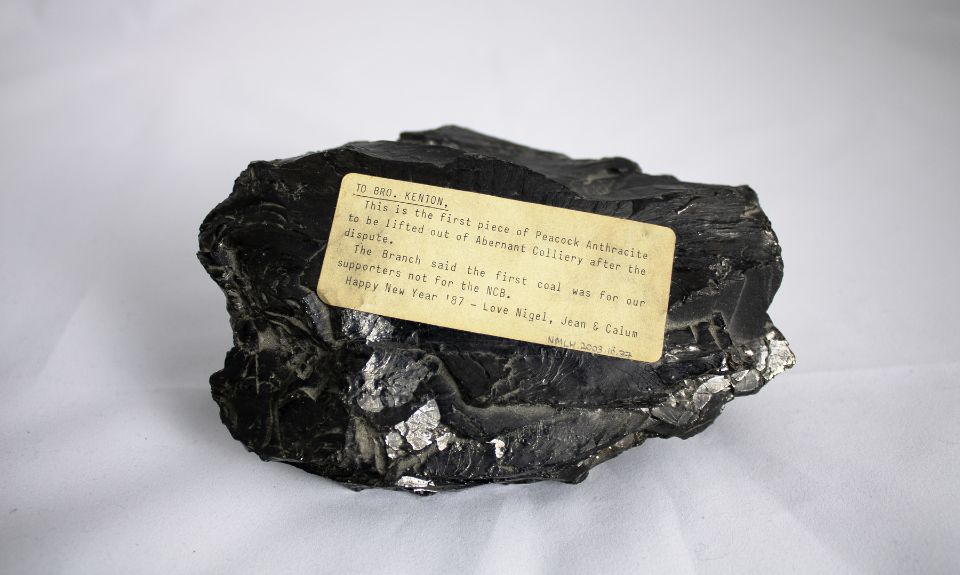
Again, we turn to the 1984 to 1985 Miners’ Strike and an object that also reflects how eclectic PHM’s collection is. This piece of peacock anthracite was the first lump of coal to be lifted from the Abernant Colliery after the dispute. As the label says, it was believed that the first pieces should go to supporters of the miners and this piece was presented to the activist and ceramicist Lou Kenton. Gifted in the spirit of the New Year’s tradition of coal representing warmth and prosperity it was given to Kenton in recognition of all that he did to support the striking miners. Examples of the ceramics that he made are held at the museum.
Where can you see this item or find out more?
This object is not currently on display. There are objects relating to the 1984 to 1985 Miners’ Strike available in Gallery Two of the museum.
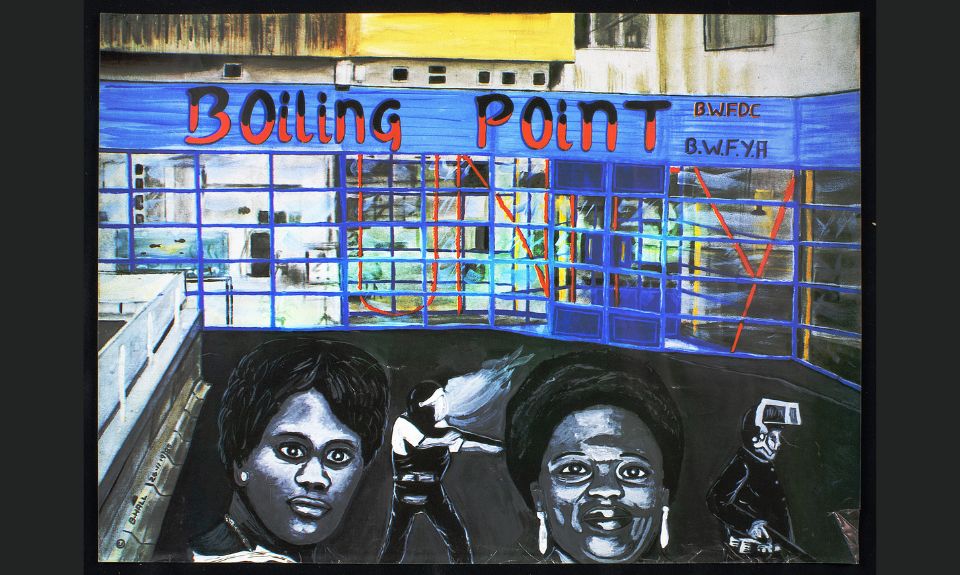
‘Boiling Point’ is a painting by Bernette Hall, created in 1985 illustrating the institutional racism and police violence against Black communities in London. The painting is set on the Broadwater estate in Tottenham, London, one of several places in the UK to experience a Black community uprising (called riots by the press) in 1985 as a response to police violence and harassment against Black people. The ‘boiling point’ in question was the harm caused to the two women in the foreground – Cynthia Jarrett and Dorothy ‘Cherry’ Groce. Groce was shot and paralysed by police in Brixton. A week later, Jarrett died of heart failure during a police search of her home in Tottenham, sparking the Broadwater Farm Riot. Neither woman was the target of the police action in entering these homes.
‘Boiling Point’ by Bernette Hall painting is a powerful piece of art commemorating the lives of Black women harmed by police brutality – Jarrett’s family never received justice, and Groce only received an apology three years after her death, and 29 years after her shooting, as an inquest proved a direct link between the shooting injuries and her cause of death.
Where can you see this item or find out more?
Not currently on public display. Contact collections@phm.org.uk to arrange to view.
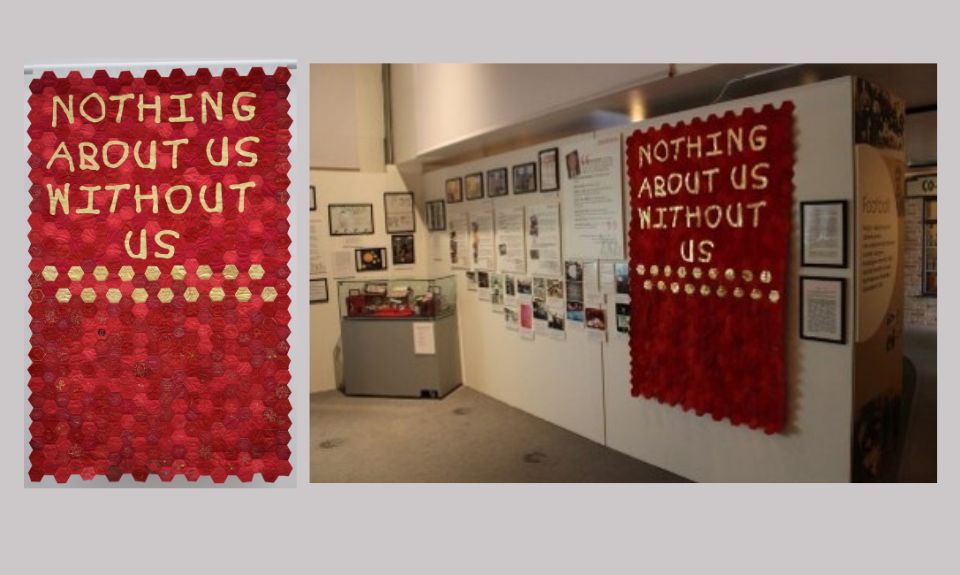
The fight for disabled people’s rights has progressed but progress has been slow with still so much further to go. The 2025 Banner Exhibition features several pieces intended to highlight key anniversaries linked to the movement that fall in 2025 including 30 years since the passing of the Disability Discrimination Act (1995) and 15 years since the Equalities Act (2010).
Significantly, 55 years ago the Chronically Sick and Disabled Persons Act (1970) was passed. It followed a long campaign championed by many disabled people who called for equality in living, education, transport, recreation and other aspects of everyday life. As a result of the legislation disabled people had the rights to welfare and support services in their own homes for the first time.
Capturing the theme of disabled people’s rights is the Nothing About Us Without Us banner, which was created at People’s History Museum in 2015 by six learning disabled textile artists. The banner carries words expressing the notion that policies and decisions should be made with disabled people and not for them. The banner was a key piece in PHM’s 2022 landmark exhibition of the same name, funded by the National Heritage Lottery Fund.
Where can you see this item or find out more?
The banner will be on display again as part of the 2025 Banner Exhibition from Saturday 18 January 2025 to Monday 29 December 2025.
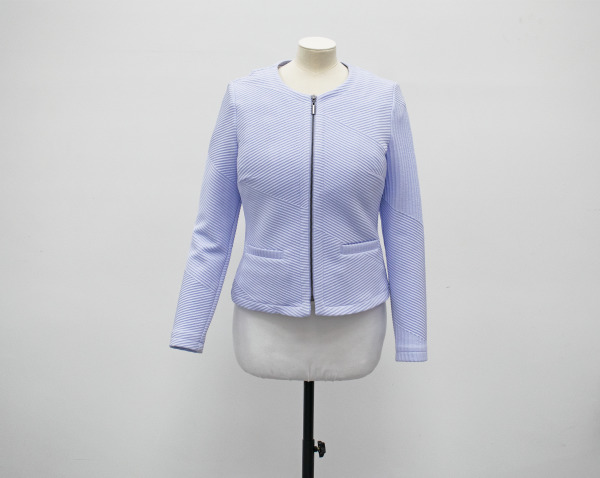
PHM is home to the country’s largest collection of campaign, political and election material, with galleries which vividly tell the story of British democracy.
Angela Rayner’s jacket was donated to the museum collection as part of a celebration of 100 years since the first Labour Government.
Deputy Prime Minister Angela Rayner wore this jacket at her first appearance at Prime Minister’s Questions (PMQs) on 16 September 2020. It is usually the Leader of the Opposition who appears in Parliament opposite the Prime Minister at PMQs but Labour Party leader and PM Sir Keir Starmer was unable to attend as he had Covid.
Angela Rayner has been MP for Ashton-under-Lyne since 2015.
Where can you see this item or find out more?
Angela Rayner’s jacket is on display in Gallery Two. As Britain was preparing to go to the polls in 2024, this jacket was put on display at the museum for the first time.
Read From the collection: General Election a blog from PHM’s Collections Manager Lisa Peatfield highlighting 20 general elections with incredible objects from the collection, including this jacket.
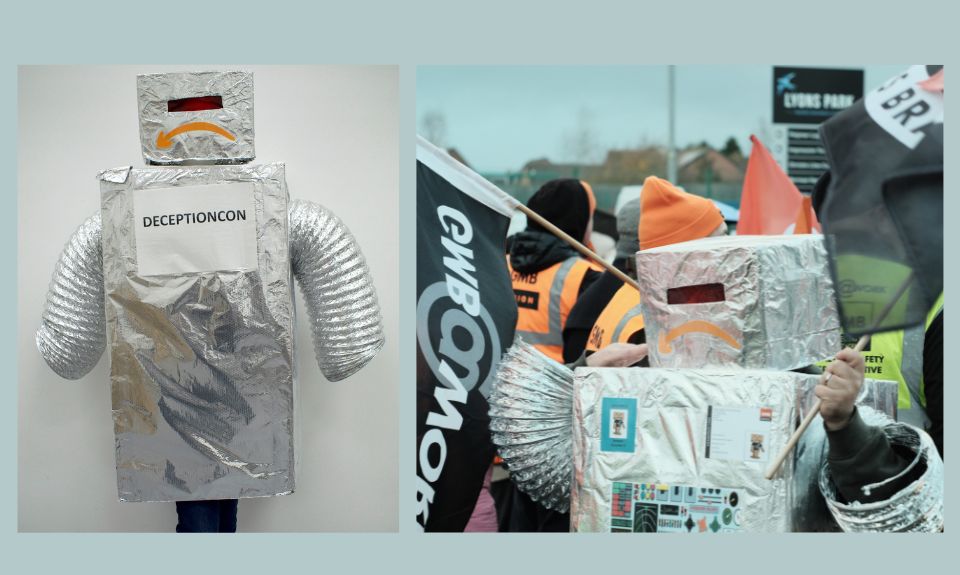
Our final treasure, Deceptioncon, is one of the newest additions to PHM’s collection but has quickly become a firm favourite. It demonstrates the creativity of protestors and how it is often handmade banners, placards or, in this case, robot costumes, that have the biggest impact.
Created by members of the GMB union, it was worn symbolically on the picket line by striking Amazon workers during November 2023’s Black Friday because they felt they were being treated like robots. They were campaigning for better working conditions, fairer pay and union recognition.
Where can you see this item or find out more?
Deceptioncon is on display in the foyer at PHM until Monday 24 March 2025.
Half Term Junkbots, a free Family Friendly activity inspired by Deceptioncon, is taking place in the Playful Protest Space from Saturday 15 to Sunday 23 February.
Back in 2020, when museum’s across the UK were closed, PHM’s team picked out another ten treasures that they believed capture the ethos, spirit and importance of the museum’s collection.
This free museum is supported by The National Lottery Heritage Fund, Greater Manchester Combined Authority & Arts Council England.